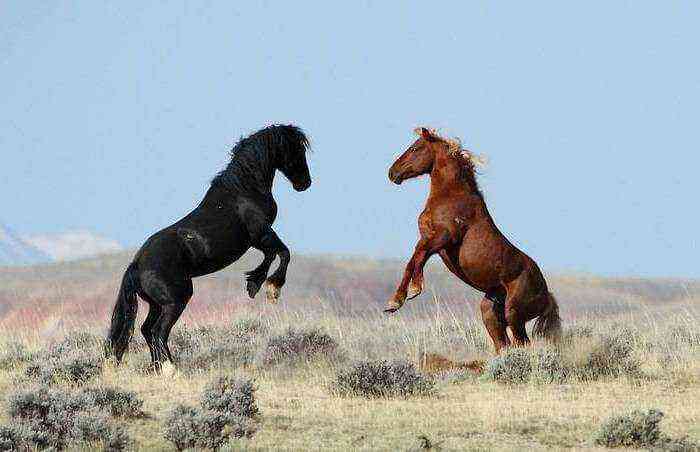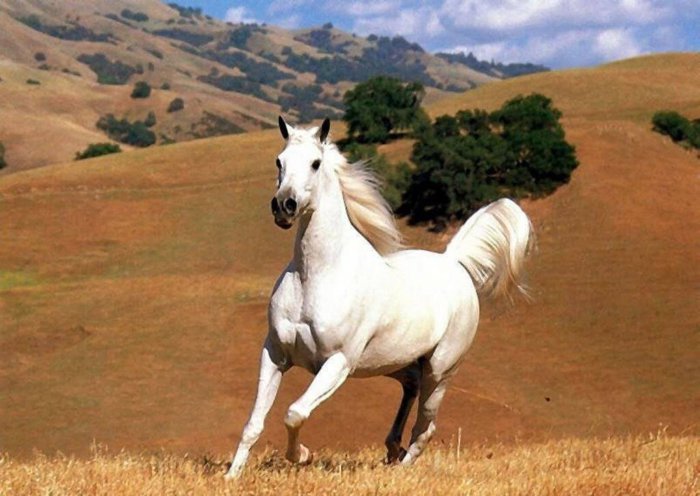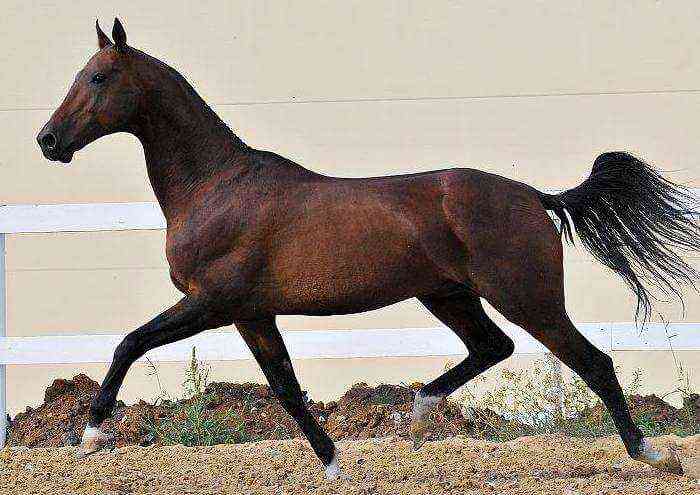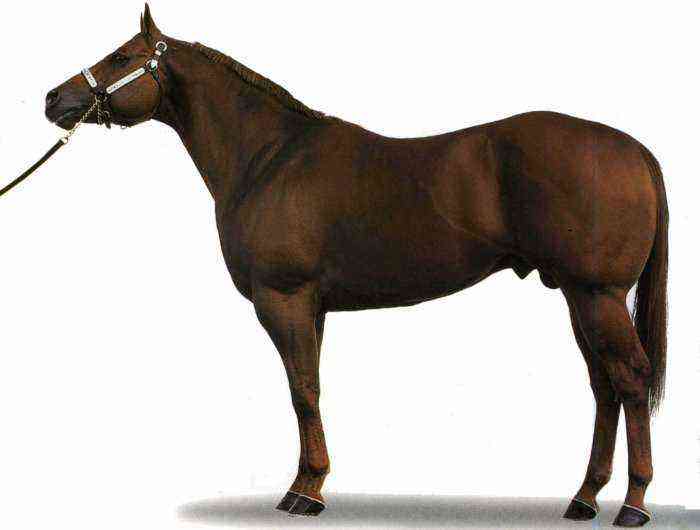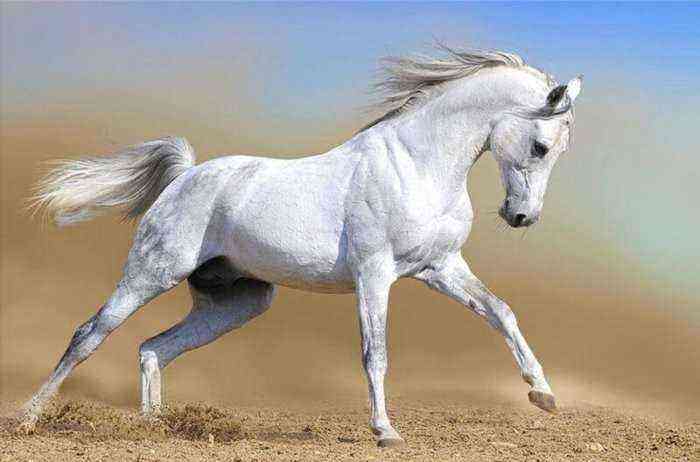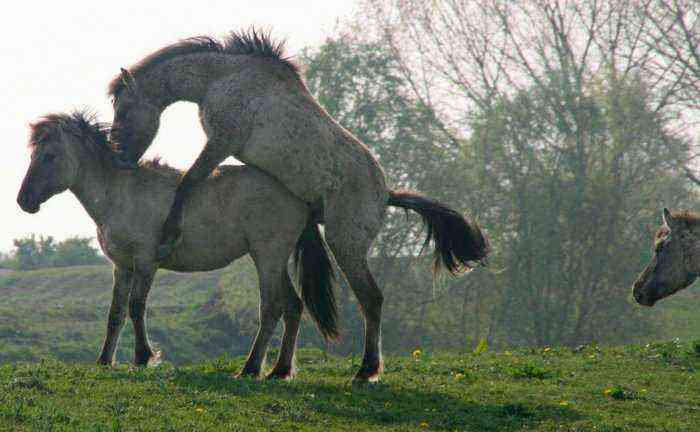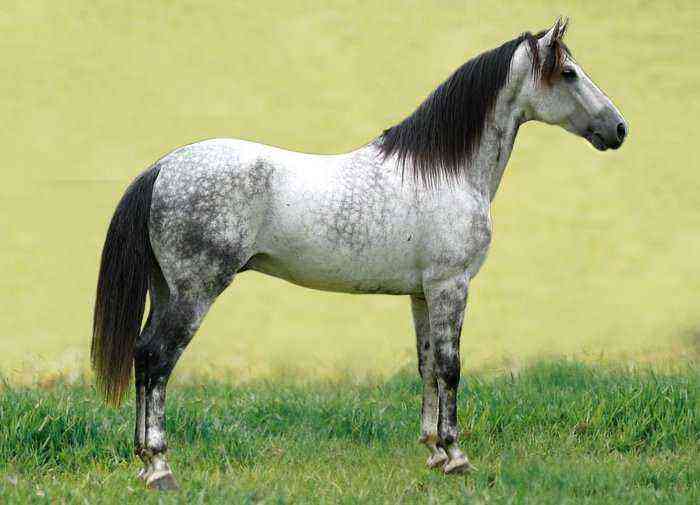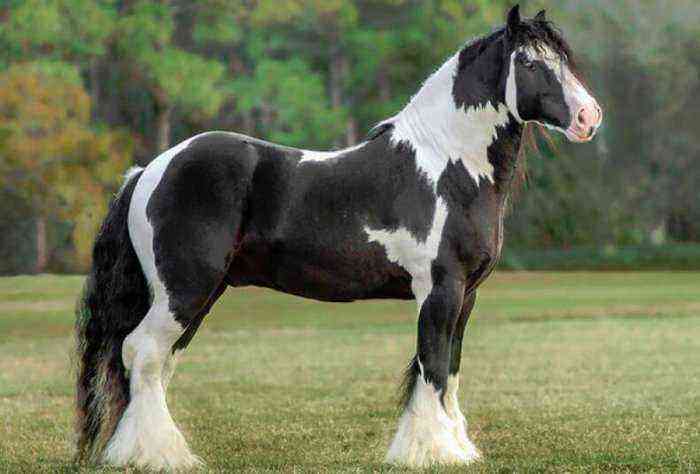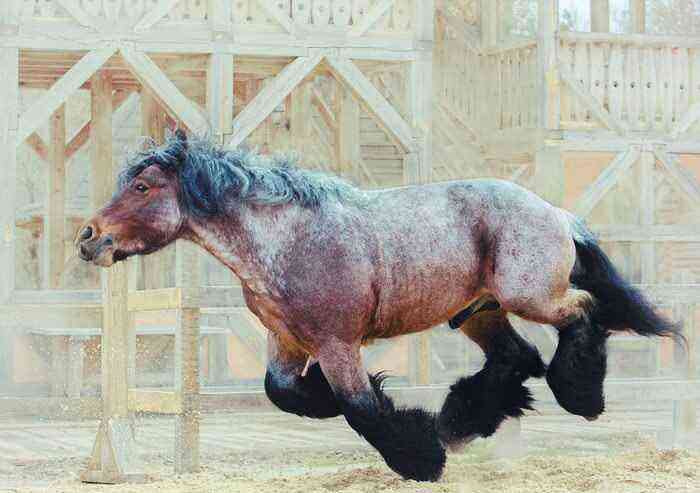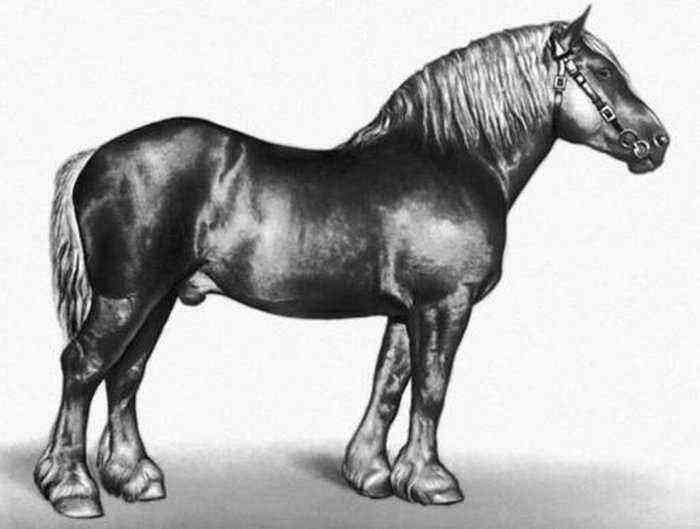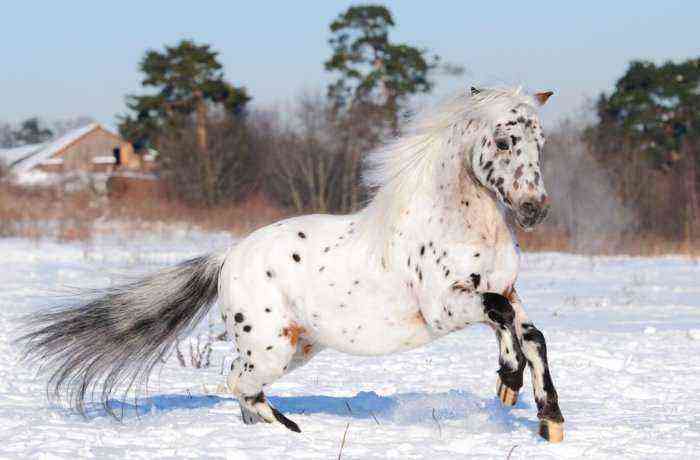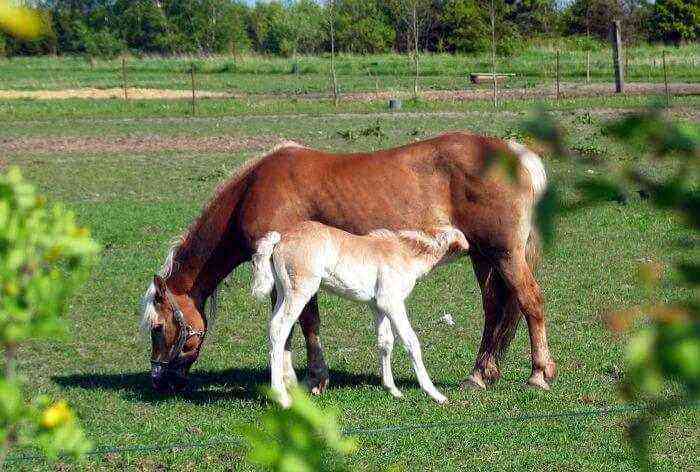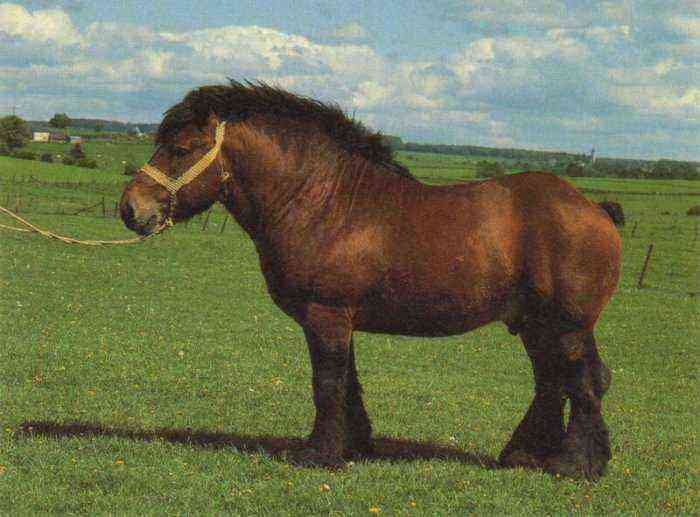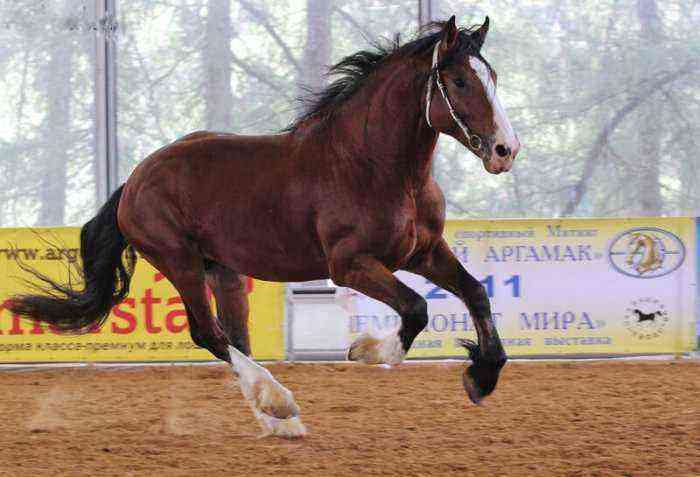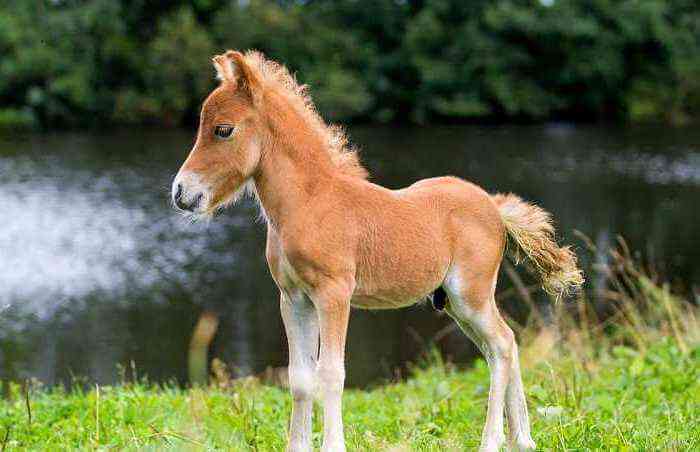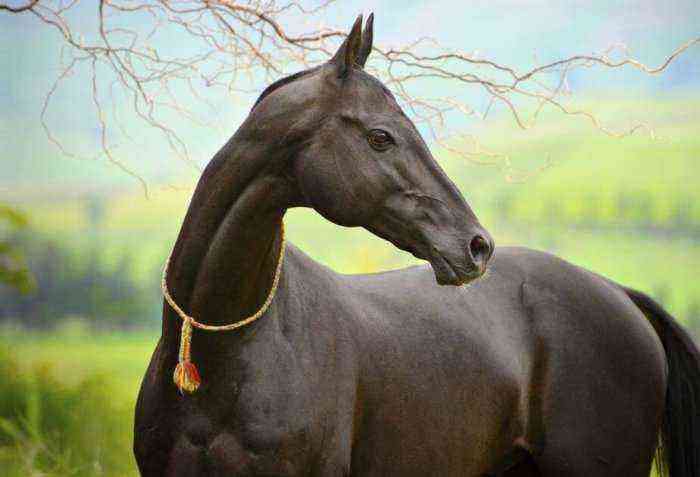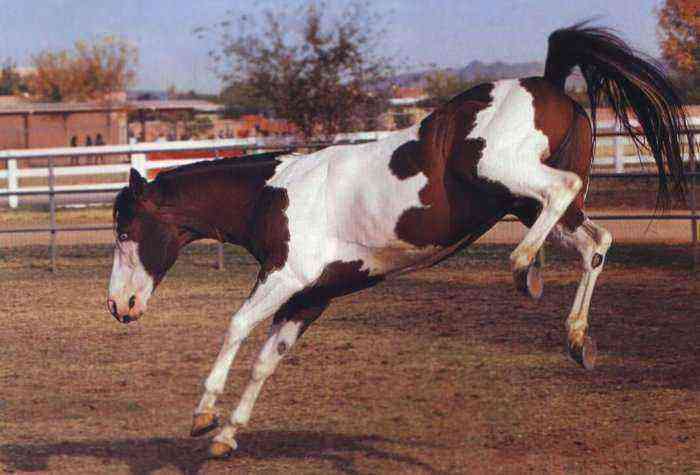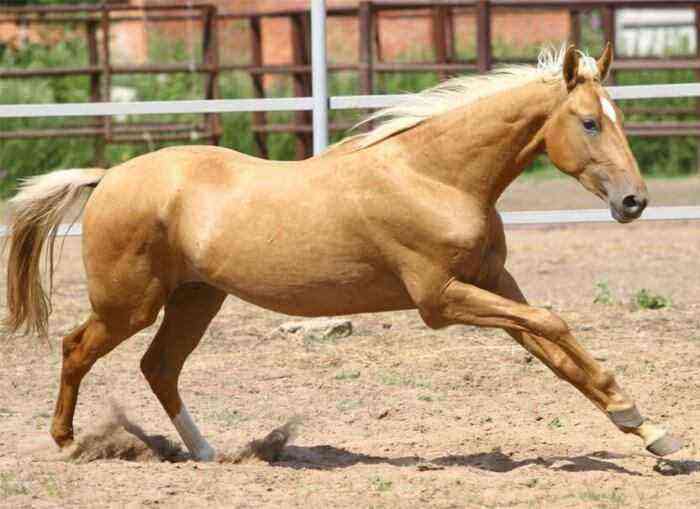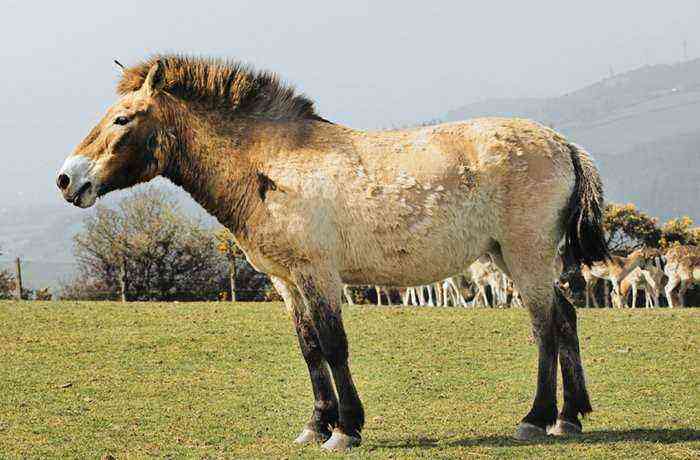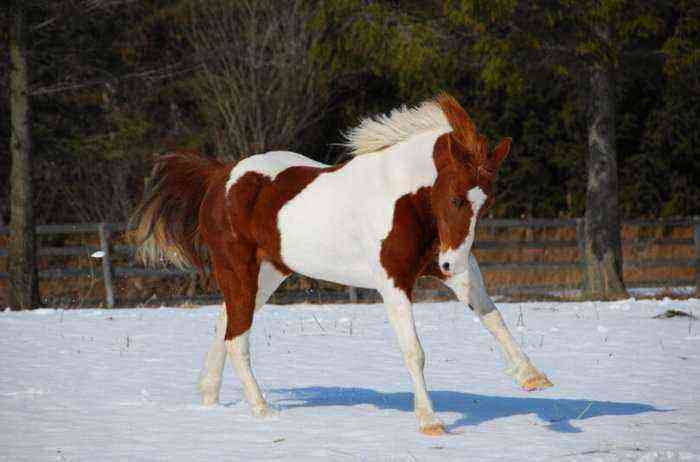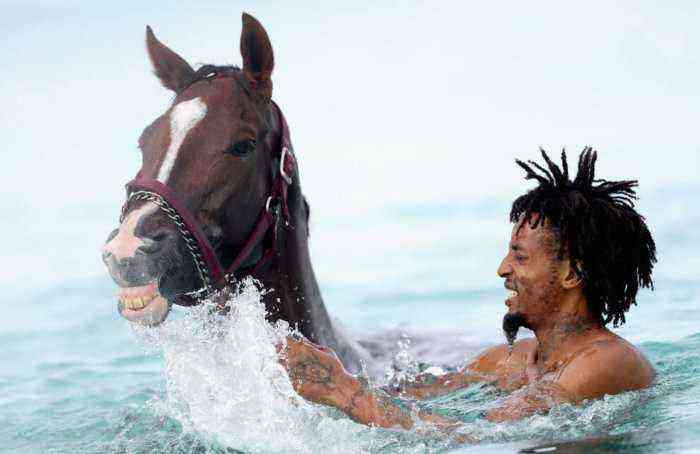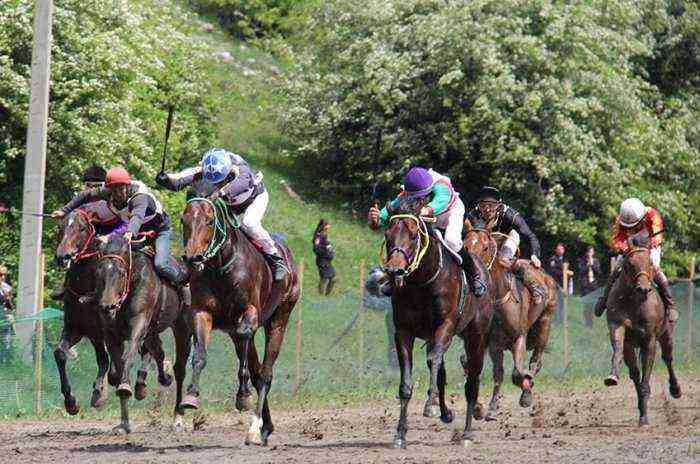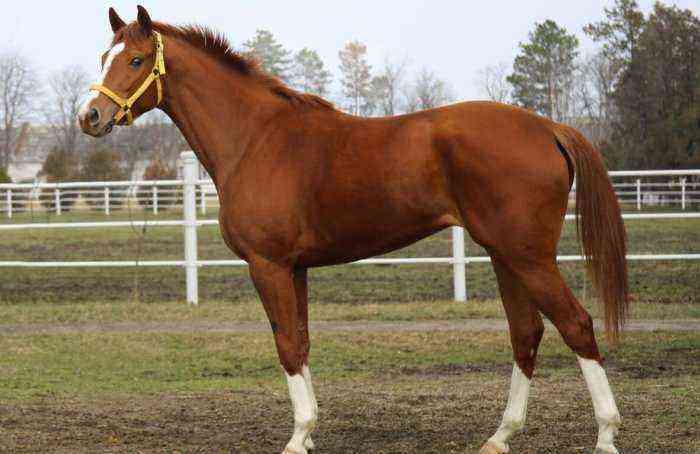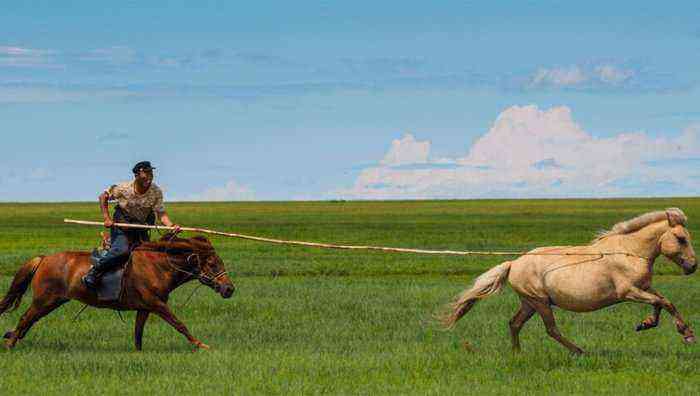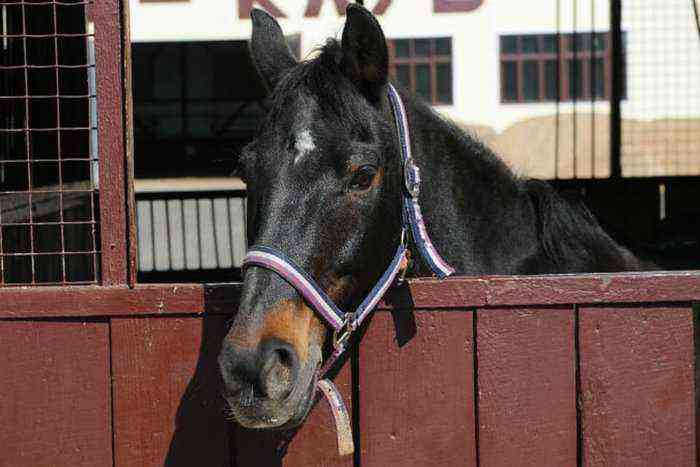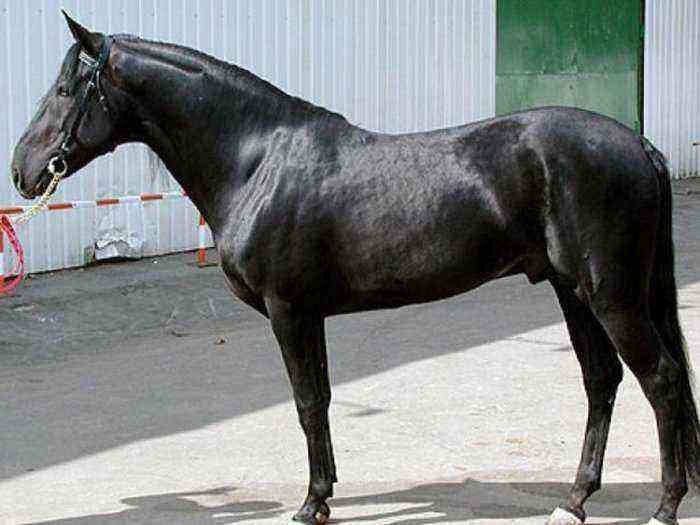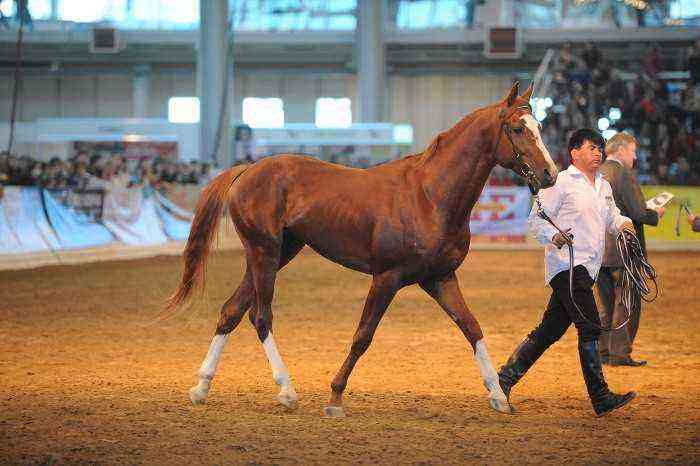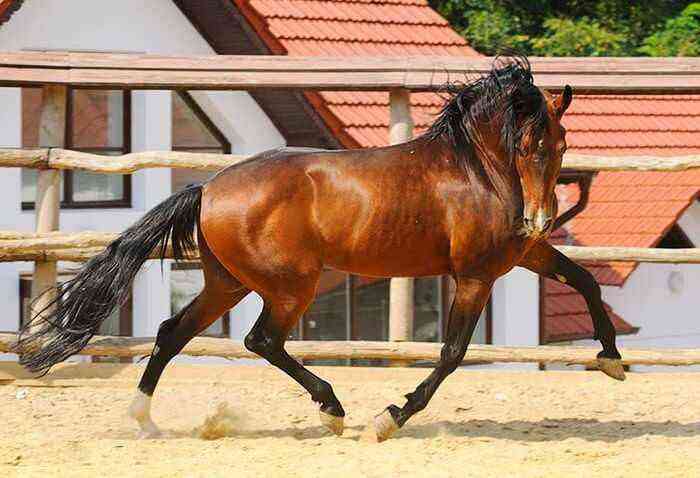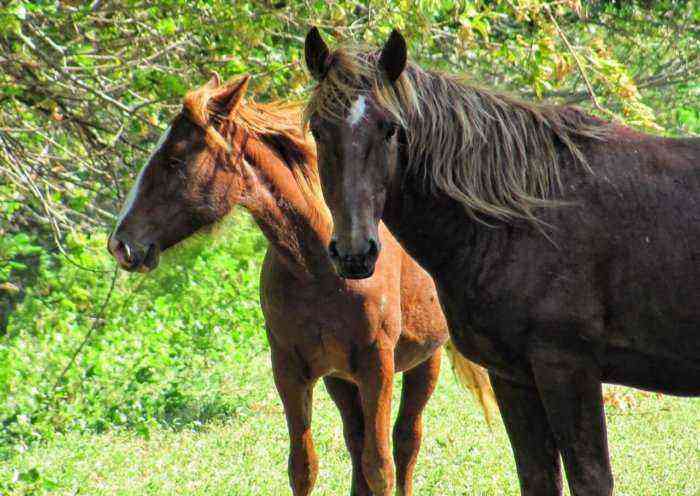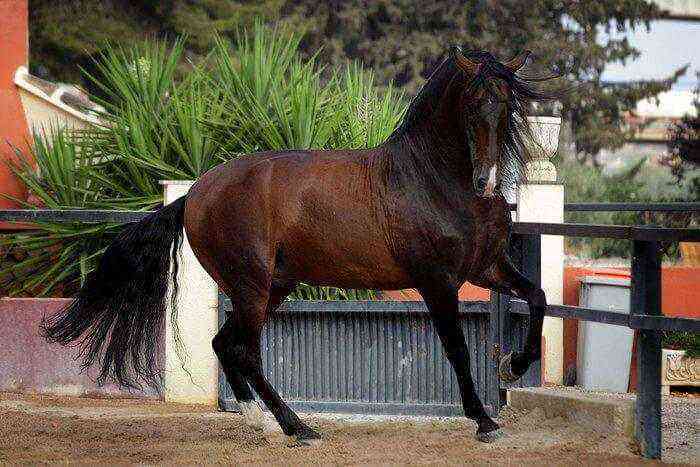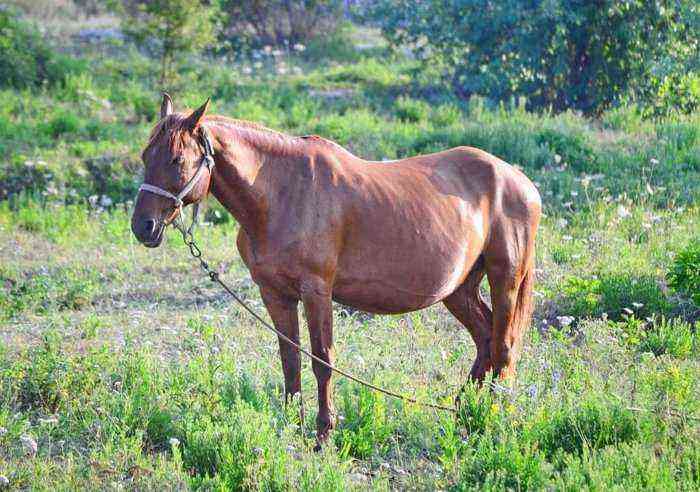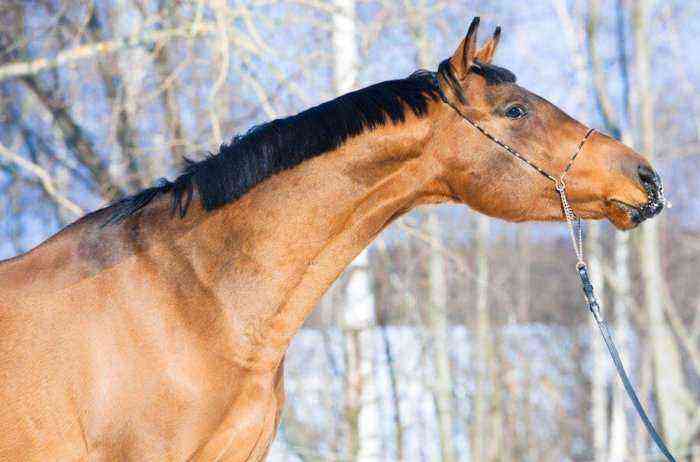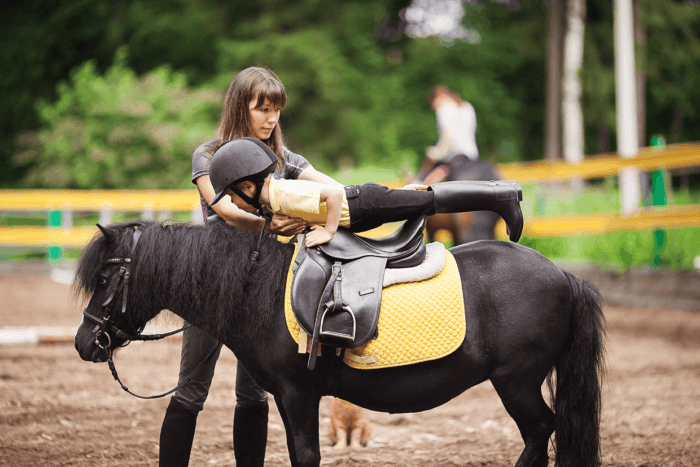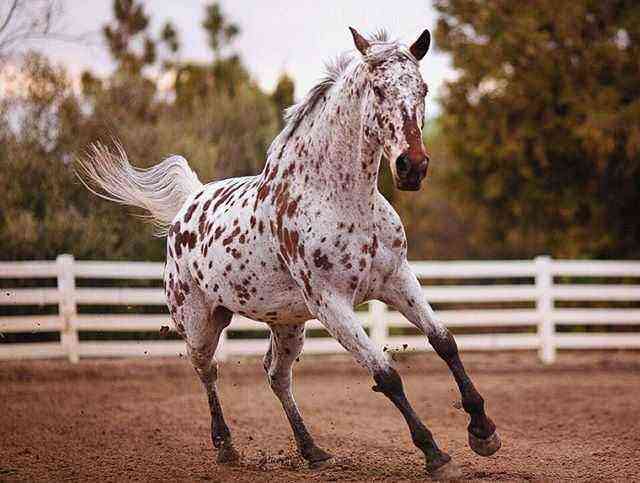The mustang horse appeared in the 16th century. Its name, translated from Spanish and related languages, means “no man’s, wild, stray”, which fully characterizes the origin of this population. These are feral domestic horses that live mainly in South and North America.
bay mustang
History of mustangs
When Spanish colonists arrived in America in the 16th century, they brought horses with them. Weakened animals were released into the wild, and some fought off the herd on their own, so a population of domestic feral horses was formed, which gradually grew.
Wild herds first served as food for the Indians, but they soon learned to use horses as a means of transportation, following the example of the Europeans. They considered animals with a spot on their foreheads to be sacred. The Indians taught their horses to obey them unquestioningly, they never used saddles, and instead of a bridle they used a narrow belt that they didn’t even pull on while riding. The horses reacted to every movement of the rider and his whisper.
The mustang population increased rapidly until the early 19th century. A significant part of it was concentrated in South America – in Argentina and Paraguay. There are almost no predatory animals on the American prairies, so nothing threatened the horses. At that time, the number of feral horses numbered about 2 million individuals, but the situation soon changed.
Mass extermination of mustangs
In the 19th and 20th centuries, wild horses became an object of hunting. They were killed for meat and skins. During the First World War, a significant part of the livestock died. The second reason for the population decline is the lack of pastures. According to official figures, today the number of mustangs is about 10-20 thousand individuals.
Attention! In 1971, the American authorities took steps to preserve wild horses by passing a law prohibiting the killing of them.
External features of mustangs
Mustangs are not large in size. Their height is 1,5 m, and their weight is 400 kg. Wild descendants of Andalusian horses have:
- dry physique;
- medium-sized head with a wide forehead and a straight profile;
- broad chested and sinewy limbs with strong hooves;
- short back;
- oval slightly drooping croup with well-defined muscles.
Mustang color
Mustangs are characterized by bay, piebald or red color. There are also individuals with a black coat color, they are considered the most beautiful.
Differences between feral horses and domestic ones
Outwardly, mustangs differ from domestic horses only in size – they are slightly larger than their ancestors. But in the character and behavior, many features are visible:
- good health;
- endurance;
- unprecedented power;
- high running speed;
- unpretentious content;
- waywardness;
- wildness.
Attention! The horse of the Mustang breed is not accustomed to obey a person, it is hard to make contact. These horses are difficult to train and tame, but some people still succeed. Obstinate horses require respect and do not tolerate rudeness.
Lifestyle and nutrition in the natural habitat
Mustangs form small herds, each of which consists of a leader, several females and foals. The head of the family is an experienced stallion over 6 years old. The family has a main female. Her task is to find ways to escape from enemies in case of danger.
Each group of animals grazes in a certain territory and does not let horses from other herds into it, but in the event of a massive attack of predators, groups can unite. If wild animals attack the herd, adult males protect small foals and females, surrounding them, while they themselves turn to the enemies with their croup and fight off with their hind limbs.
Reference. Male foals stay in the herd with their parents until about 3 years old, and then leave to create their own herd.
Mustang horses feed on grass and leaves of bushes. They are able to go without food for several days. The duties of the main male include the search for water bodies for watering and good pastures. With the onset of winter, the horses have a hard time – it becomes more difficult to find food. Animals dig snow with their hooves and eat dry grass. To keep warm, they become close to each other.
Mustang horse
Reproduction
The mating season for mustangs begins in April and lasts until the end of July. Males enter into serious fights with each other for the right to master the best females. The strongest wins. Thanks to this, healthy and strong offspring are born. Pregnancy in horses lasts 11 months. Each mare produces one foal. Before the onset of winter, he will have time to get stronger.
At the time of childbirth, the mare goes to a safe place and takes care of the baby. Two days later, mother and foal join their herd. The female feeds offspring with milk for 6–8 months. Males live with their parents, and at the age of three they leave them and remain alone, gaining experience. And then they create their own group of horses or win back the herd from old stallions.
Despite the ban by the authorities, the capture of mustangs continues. Some people tame wild horses and sell them for a lot of money, because it is very prestigious to have such a horse. Steeds are used in some equestrian sports. Their main advantage is unpretentiousness and endurance.
